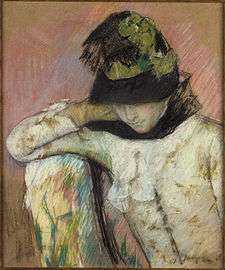Wove paper

Wove paper is a writing paper with a uniform surface, not ribbed or watermarked. The papermaking mould's wires run parallel to each other to produce laid paper, but they are woven together into a fine wire mesh for wove paper. The originator of this new papermaking technique was James Whatman (1702–59) from Kent, England.[1]
For 500 years European paper makers could only produce what came to be called laid paper. In 1757 John Baskerville printed his famous edition of Virgil on a new kind of paper, called Wove (known in Europe as Vélin). This paper is now known to have been made by the elder James Whatman. Twenty-five years later (1780s) the manufacture of wove paper spread quickly to other paper mills in England, and was also being developed in France and America. All this took place over a decade before a machine to replace making paper by hand was conceived. With the establishment of the paper machine (1807), the manufacture of paper on a wove wire base would become the predominant standard in the world, with laid paper being relegated to certain specialist uses, such as being used as a support for charcoal drawings. Today more than 99% of the world's paper is made in this way.
Whatman paper
Whatman paper is a type of wove paper named after James Whatman. It is notable for its exceptional quality. Whatman paper is grained, strong and rigid, without laid lines. It is used in publishing, filtering, and chromatography.[2]
See also
References
Sources
- Balston, J.N. (1998). The Whatmans and Wove (Velin) Paper : Its Invention and Development in the West.